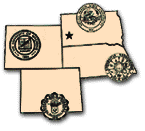Animal Science, Department of

Range Beef Cow Symposium
Date of this Version
December 1999
Document Type
Article
Abstract
Our western rangelands support a wide variety of species including ruminants that are exquisitely suited to make use of these renewable resources. Domestic ruminants utilizing these rangelands include cattle, domestic sheep, and less frequently, at least in the northern Great Plains and intermountain west, domestic goats. Wild ruminants, in numbers, variety, and quality not found anywhere else in North America, include mule deer, pronghorn, and elk. White-tailed deer frequent the riparian areas, moose are found in low numbers in forest lands, bighorn sheep inhabit rough breaks and the higher altitudes, and free-ranging bison are found around the national parks in Wyoming and Montana. Domestic and wild ruminants have many biological, physiologic, and behavioral similarities, as well as considerable differences. These ruminants consume similar forages, share salt licks and blocks, and seek out the same sources of water in our desert/semi-desert region. Thus it is not surprising that they may share diseases. The purpose of this paper is to review what we know about some of the diseases that domestic and wild ruminants may exchange and to put the potential for sharing diseases into perspective.


Comments
Published for Proceedings, The Range Beef Cow Symposium XVI December 14, 15 and 16, 1999 - Greeley, Colorado.